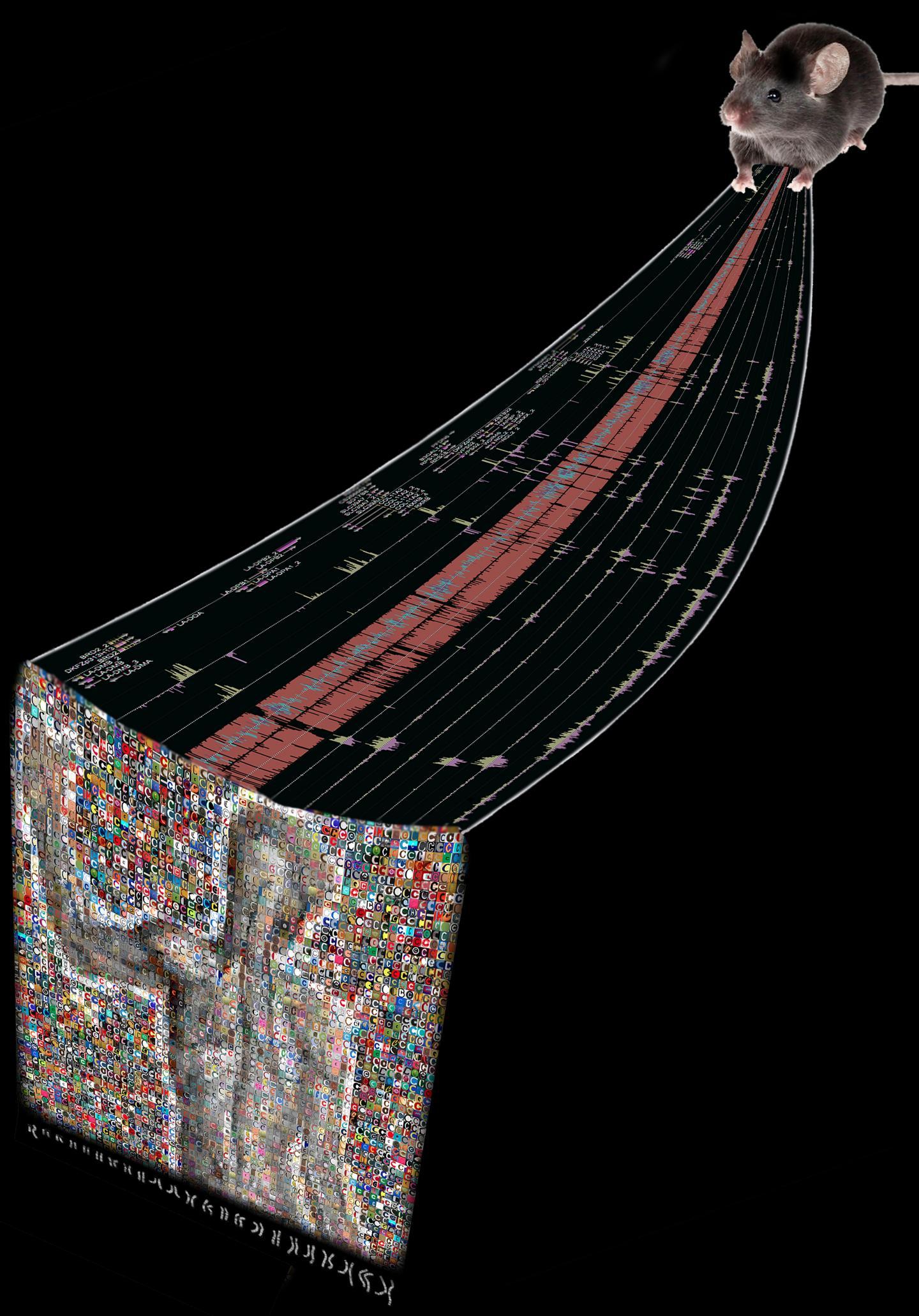Powerful clues have been discovered about why the human immune system, metabolism, stress response, and other life functions are so different from those of the mouse. A new, comprehensive study of the mouse genome by an international group of researchers including Penn State University scientists reveals striking similarities and differences with the human genome. The study may lead to better use of mouse models in medical research.
The findings are reported by the Mouse ENCODE Consortium online on November 19, 2014 and in print on November 20 in the study's main paper in Nature and in several other recent and future publications. They examine the genetic and biochemical programs involved in regulating mouse and human genomes. Ross Hardison, the director of the Huck Institute for Comparative Genomics and Bioinformatics at Penn State University, is the senior corresponding author or co-senior author for four of the five new papers by the consortium, including the paper in Nature.
"We didn't know before these research results that there are a large number of genes with expression levels systematically different between mouse and human," Hardison said. The results offer insights into how gene regulation impacts systems important to the biology of humans and other mammals. The results also provide new information to determine how best to use the mouse as a model for studying human biology and disease, and may help to explain some of the limitations of using the mouse for specific kinds of studies.
"Now we also know which genes have expression patterns that are shared between mouse and humans," Hardison said. "For biological processes using genes with conserved expression patterns, the mouse is an excellent model for certain aspects of human biology."

Powerful clues have been discovered about why the human immune system, metabolism, stress response, and other life functions are so different from those of the mouse. A new, comprehensive study of the mouse genome by an international group of researchers including Penn State University scientists -- published on 20 November 2014 in the print edition of the journal Nature -- reveals striking similarities and differences with the human genome. The study may lead to better use of mouse models in medical research.
(Photo Credit: Ryan Lister, University of West Australia)
The scientists also found that, in general, the systems that are used to control gene activity have many similarities in mice and humans, and that the basic structure of these systems has been conserved in both species throughout evolutionary time. The researchers found that differences appeared for specific genes and regulatory elements. "Gene regulation is an equation with many possible solutions," said John Stamatoyannopoulos at the University of Washington, a co-senior author with Hardison of the main Nature paper.
The Mouse ENCODE (ENCyclopedia Of DNA Elements) project is building a comprehensive catalog of functional elements in the mouse genome, and is comparing them to those in the human genome. Such elements include genes that code for proteins, non-protein-coding genes, and regulatory elements that control which genes are turned on or off, and when they are turned on or off. Bing Ren at the University of California, San Diego, also a co-senior author with Hardison of the Nature study, said "This is the first systematic comparison of the mouse and human at the genomic level."
The portion of the Mouse ENCODE effort centered at Penn State focused on comparing mouse and human gene expression and regulatory elements during cell differentiation. This work was done in collaboration with Yu Zhang, associate professor of statistics at Penn State, Feng Yue, assistant professor of biochemistry and molecular biology at Penn State's College of Medicine, and other researchers. "Comparison of the regulatory landscape between mouse and human reveals complex relationships, with some regulatory regions being strictly conserved between mouse and human, other regulatory regions being lost or acquired along each evolutionary lineage -- perhaps reflecting adaptation to different environments, and other regulatory regions being re-used in different tissues," Hardison said. "One would expect that the strictly conserved regulatory regions were particularly important, and this is true, but our collaborative studies have revealed an unexpected basis for their importance." The Mouse ENCODE work revealed that these strictly conserved regulatory regions are active across different tissues, including blood, heart, brain, and others, to a much greater extent than had been previously appreciated. The multiple functions of these regulatory regions may explain the stronger selective pressure during evolution, thus leading to their strict conservation.
The broad, global approaches used in Mouse ENCODE allow investigators to see which genes are expressed in similar patterns and levels between mouse and human, and which ones have divergent patterns. "This information from Mouse ENCODE will enable investigators to make data-driven interpretations of the rich body of information in mouse model systems for potential translation to insights about human biology and health," Hardison said. "For genes with conserved expression patterns, the translation may be quite direct, whereas for others the divergence in expression patterns needs to be incorporated into the inferences for human biology."
Source: Penn State